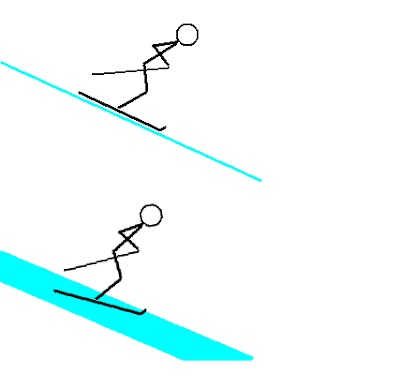So why do so many people say to lean back in powder? To keep the tips out of the snow is the answer I often hear. Another reason is that good skiers often appear to be leaning back in powder, and their tips often do come out of the snow. Both answers are related, but we need to take a closer look at what is really going on to show that you don't actually have to lean back.

When we say we need to be centred, we are talking relative to the ski - most people know that as the slope gets steeper we have to lean forward more to maintain our position over the ski. On a firm, groomed slope, the ski is flat on the slope, so the position we make over the ski is the same as the position over the slope. However, in deep snow the ski tip needs to come closer to the surface of the snow, and the ski will compress the snow beneath it to form a supporting platform. The result of this is that the ski is no longer parallel to the slope but angled upward, so that the skier who is balanced over the skis appears to be leaning backwards against the slope. The diagram shows two skiers, both in balanced positions on similar pitched slopes, however the bottom skier is in deep snow so the whole picture, including the skis, is tipped backwards.
This may seem a bit pedantic - after all the skier does look like they are leaning back - the important point though is that they will feel centred and in balance. If someone is told to lean back they will inevitably lean onto the backs of their boots and find it hard to stay in control.





